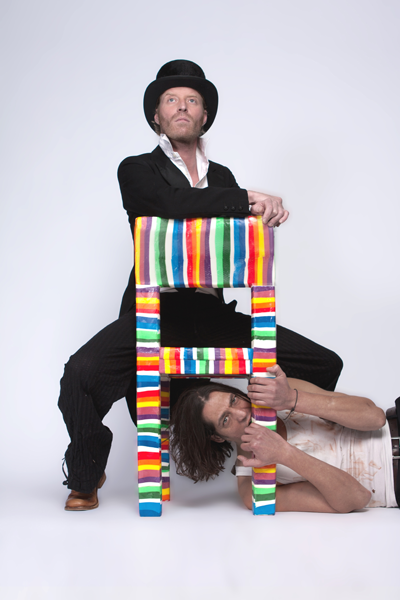 |
| Pieter Brenner and his Sugar Chair |
"The sugarchair can be shaped by its owner into a personalized and unique form. Thru the shaping and the treatment of its owner, the sugarchair wil turn into a very unique object. The user can play an active part in the design with form and the dimensions of the object himself. The more consumed, the less mass left of the chair", states Brenner. Why sugar you may ask? Brenner points out that, "Sugar will become the basic material for eco-fuel, plastics and cosmetics". Just think of the sugar chair as a whole new level of recylcing!
We here at The Country Mink and The City Mink are very excited to see what Pieter Brenner comes up with next as he continues to push the boundries of dada and consumerism.
 |
 Back in 2007, Flavor Paper, a New York based wallpaper company came out with scented wallpaper in banana and cherry. That's right, scratch and sniff wallpaper for your very home! Designed by Michael Angelo you can purchase banana or cherry scented wallpaper.
Back in 2007, Flavor Paper, a New York based wallpaper company came out with scented wallpaper in banana and cherry. That's right, scratch and sniff wallpaper for your very home! Designed by Michael Angelo you can purchase banana or cherry scented wallpaper.The wall paper is hand screened, measures 27" x 15' and comes in at $350.00 a roll. If you like the pop sensibility, but not the scent you can purchase them scent free, but what's the point in that? Maybe Flavor Paper can come up with some lickable wall coverings for that before bedtime snack?
Lastly, an item that could be out of your childhood dreams (or nightmares) is Essential Dynamics 3-D food printer. While 3-D printing is nothing new, this is the first printer that prints with something other than plastics and resins.
The 3-D food printer was invented by a group of students at Cornell University. The Cornell students plan to have blue prints online for FREE, so your material start up cost would only be about $1,000. They hope to get that down to $700 and then down to about the price of an I-Pad. They want every home to be able to have one. The Essential Dynamics version is being sold for $3,000.
Unlike other available 3-D printers, the food printer uses syringes that can be filled with any paste like substance; cookie dough, frosting, masa, chocolate, etc. The French Culinary Institute is already using one in their kitchens. If you can plot it in your computer, the machine can print it out in food. This also means that you could print a hamburger out of tofu, a cake out of ramen....Anything can be printed to look like the food that it is not. Check out a video of the printer in action.
Amazing as this seems, one can't help think of the last scene in Soylent Green when Charlton Heston finds out the tasty plant based crackers everyone eats are really made out of people.
The 3-D food printer was invented by a group of students at Cornell University. The Cornell students plan to have blue prints online for FREE, so your material start up cost would only be about $1,000. They hope to get that down to $700 and then down to about the price of an I-Pad. They want every home to be able to have one. The Essential Dynamics version is being sold for $3,000.
Unlike other available 3-D printers, the food printer uses syringes that can be filled with any paste like substance; cookie dough, frosting, masa, chocolate, etc. The French Culinary Institute is already using one in their kitchens. If you can plot it in your computer, the machine can print it out in food. This also means that you could print a hamburger out of tofu, a cake out of ramen....Anything can be printed to look like the food that it is not. Check out a video of the printer in action.
Amazing as this seems, one can't help think of the last scene in Soylent Green when Charlton Heston finds out the tasty plant based crackers everyone eats are really made out of people.
No comments:
Post a Comment